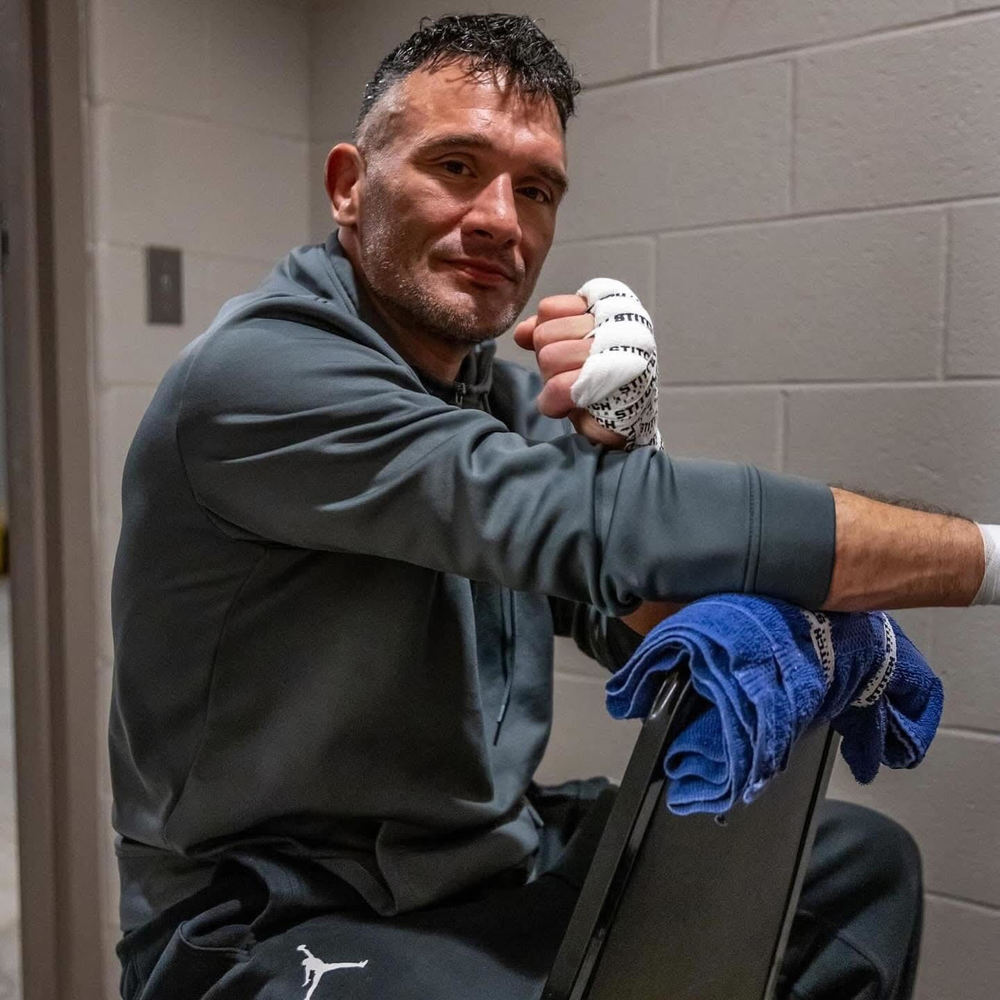In 2024, at age 41, Cody Carrillo was already a decade past the average age most MMA (mixed martial arts) fighters retire, but in his four professional welterweight bouts last year, he garnered two wins.
He is ranked in the top 10 Pro Men's Welterweights in Kansas and is 12th in both Kansas and Missouri Region.
The quarter century trek from graduating with the Parsons High School Class of 2000 to where he is today has had peaks and valleys.
Carrillo went to Labette Community College to continue wrestling as he had done throughout school.
“I was there for a couple of years and then I took time off from school and was trying to find myself,’ he said. “I stayed around the wrestling community and stumbled upon mixed martial arts. One of my college roommates was actually fighting up in Kansas City. I was kind of a lost soul. I was looking for something to fill that void for competition and the genesis of the sport, especially sanction wise in Missouri, Kansas and Oklahoma, did that.”
He had become out of shape and overweight from drinking too much, but felt he could easily step up to the challenge of getting back in shape. It was something he could commit himself to. He knew how to do it. He just needed further training. At that time in Parsons Andres Martinez-Chavez was operating the Parsons Ju Kempo Academy at the Parsons Gym.
“He had like a small recreational group. I came to him with the idea I was going to fight. He educated me the best he could,” Carrillo said. Ju Kempo or Kenpo is a jiu jitsu self-defense style of martial arts. Speed up it becomes useful in mixed martial arts competition.
“His system was like a hybrid system of striking and grappling, so it was pretty good for me,” Carrillo said.
He started training in 2004 or 2005. His first fight was in 2006. He fought a few fights under the Parsons Ju-Kempo Academy name, but then a friend he met from Wichita who was also a fighter, convinced him to move there to further develop his skills and career. To improve in MMA one must fight, and the broader range of competitors one can practice with, the better honed their skills can become.
“Like I said, it was a small recreational group in Parsons, so there were not a lot of athletes to train with,” he said.
He joined a Muay Thai school at a gym in Wichita.
“I actually lived in the gym itself for a couple of years while I was sprouting my career,” he said. “It’s pretty funny the way the universe works. Wrestling was my way, my path to victory, the beginning of my career, but I got in a real bad car accident in 2008. I broke my back. When I returned to training, I was not able to grapple the way I wanted to, like I was used to. The accident, the injury to my back, was a blessing in disguise, because I ended up becoming a really proficient striker and that’s where I’ve made my mark, is as a striker.
“I was signed to the biggest Muay Thai promotion outside of Asia for a while, and that’s what people come to expect who come to watch me fight,” Carrillo said. “I’ve taken a lot of professional kickboxing fights with strikes.”
Forty-four percent of his wins have been from KO’s or TKO’s.
Fighting is pretty much what he has done full time for years, though he has also coached college wrestling and he currently coaches wrestling at Wichita East High School.
“I’m obviously extremely grateful for all the places fighting has taken me and all the experiences that I’ve had. Certainly it is not like I couldn’t be doing something else and be doing better for myself financially, but fighting, one way or another, has given me what I have in life,” he said.
“Definitely doing what I love is a special thing and it’s not something that very many people get a chance to do. It was the best way for me spiritually to emotionally burn off all the issues that I had. For me to be able to pay my bills chasing my passion is a blessing all in itself,” he said. “It’s allowed me to meet a bunch of cool people and do a lot of cool things. I kind of made my own schedule and I got to spend more time with my children as I became a father.”
He has especially appreciated what MMA fighting has taught him about himself, like possessing strong resilience and determination.
Those are traits the now 42-year-old Carrillo is going to need as he alters his course, facing probable retirement from his MMA career. Last month he underwent surgery to take part of his quadricep and graft it to repair his ACL. Full recovery usually takes 9 to 12 months. Returning to sports is then done gradually, beginning with non-impact activity, then there is always potential risk for reinjury, especially in contact sports like MMA and an athlete that practices Muay Thai.
“I would be very blessed to be able to fight again, but it doesn’t seem very likely,” he said. “I definitely will not be fighting again any time soon, but I plan to be active in coaching others. I enjoy teaching martial arts and coaching and being a mentor because the coaches I had were very special to me in giving me a lot of knowledge and things I wouldn’t have had otherwise. 
“Coach Tony Shearburn, my wrestling coach, he was the quiet stoic type, but he was there for me. He would give me advice. It was usually just a couple of sentences, but because he didn’t talk a lot, it meant a lot. He was a kind of lead-by-example guy. We’d be training in the morning and he'd be out running with everyone at 50-years-old. He was never a yeller or rah rah guy, but when he’d talk you’d listen.”
Looking back, Carrillo said he is grateful for many things in his life, including growing up in Parsons.
“I’m thankful for Parsons. Parsons taught me a lot about being open to all types of people,” he said. “My childhood friends from Parsons are still my best friends to this day, so that’s cool.”
To the young people potentially looking at competing in mixed martial arts, he encourages them to take wrestling while in elementary and secondary school.
“It’s free. It’s hard training and it teaches you so much. It teaches you accountability, how to be humble, how to win and lose, because no matter how much you are winning, you are going to run into someone who is going to beat you. It teaches you how to work hard and be disciplined,” he said. “ There are a lot of invaluable lessons. If you are going to have success as an athlete, everything after wrestling is pretty easy.”
Beyond school, he suggests those training to be fighters find a good reputable gym and advises them not to fall into the traps of social life and attention.
“It’s pretty easy these days for people to get into the social media and believe their own hype and create their own clout,” he said. “Generally what happens is the dark comes to light.”

